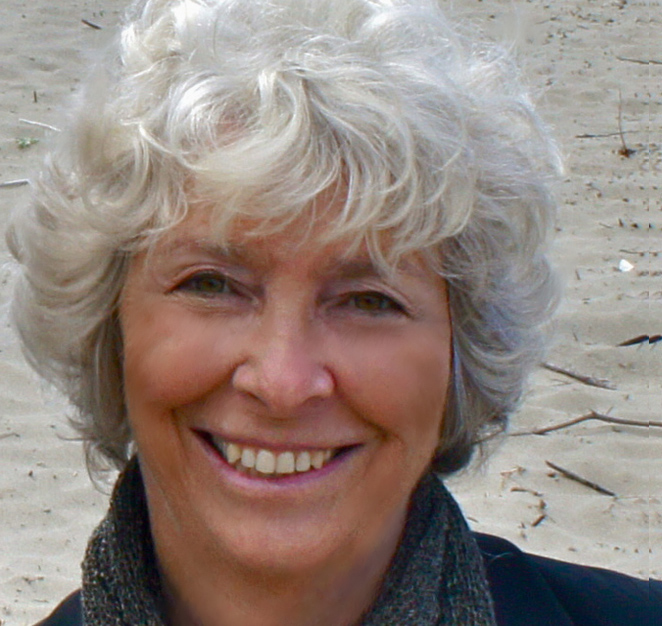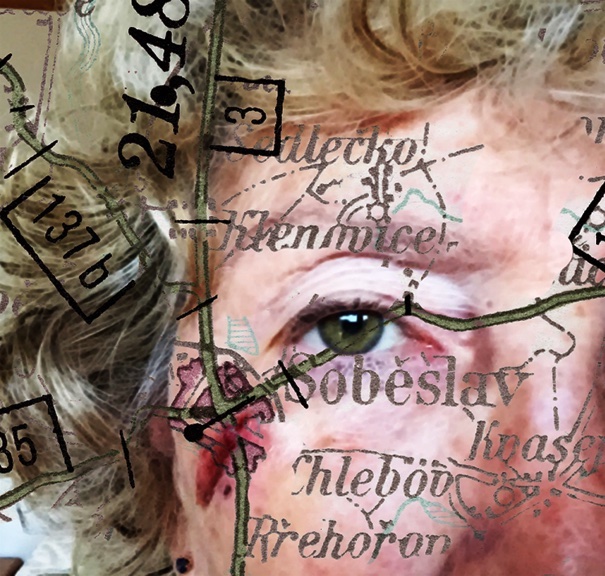Local Author Jana Zimmer Sheds Light on Her Four-Decade Journey

Jana Zimmer, an attorney and mixed media artist, has recently released Chocolates from Tangier: A Memoir of Art and Transformation by a Holocaust Replacement Child. In it, Zimmer knits together a narrative from her journals, poems, artwork, and the experiences of her parents — both Holocaust survivors. Her artwork, displayed throughout the memoir, engages in a dialogue with the text and serves as a powerful visual expression when words alone won’t suffice. Utilizing the collage technique, Zimmer combined multiple elements to create cohesive compositions that poignantly represent her and her family’s experiences.
Her art has been exhibited in the Czech Republic (in Prague and the Terezin Ghetto, where her parents were imprisoned), and Freiberg, Germany, where her mother endured forced labor.
Q. You’ve described this book as a project forty years in the making. Can you tell us more about its origins?
A. From the time I was a child, what was done to my family in the Holocaust was a forbidden topic, and it has taken me until now, when I am old, to find a way to express what I need to say about it. The book encompasses the journey of how I eventually found my voice without causing my parents undue pain or imposing forbidden questions. So, it’s not a direct answer to your question, but the book came to be from various materials I had accumulated over time. I’ve been writing about all of this on and off for about 40 years, as you will see in the book, mostly in very private journals, and in poems, all but one never published. Some of the initial pieces were penned in the early ‘70s when I was in graduate school.
Q. Your artwork is found on about a third of the memoir’s pages. Can you tell me more about your artistic journey?

A. I didn’t start to make art until about 1995, 11 years after my father died, and when my mother came to live with us. Most of my art, and my process in the last 25 years, has to do with finding my own voice to express what I need to express as a Second Generation survivor, first for my parents and now for me. One of my collages features my mother’s face superimposed over an image of the factory where she was forced to labor.
Q. When did the actual process of compiling the book begin?
A. The idea to piece everything together came to me during the Covid pandemic, after I joined a womens’ memoir writing class. It was a peculiar time – when the concept of time itself seemed to shift. I realized that I didn’t need to rely on my memory alone. I was fortunate that my parents kept every family document they could save, buried some, and left some with neighbors when they were deported. The oldest such document is from 1829, the newer ones from the war. After my mother brought this treasure trove to Santa Barbara, I scanned all the documents and photos into my computer. I started putting together the disparate fragments during the lockdown. Then my stepdaughter suggested I reach out to a specific publisher. From the initial contact with DoppelHouse Press to acceptance and now publication, it’s been about two years.
Q. That’s quite a journey. By the way, did your writing group have a name?
A. (Laughs) Not officially, but we informally call ourselves “The Coven.” We’re all feminists of a certain age. And yes, I still continue to write with them.
Q. It’s great to have that supportive network. Now, your book touches on themes of compassion and connection. How do you think its publication can foster a sense of connection not only among individuals, but also among traumatized communities?
A. That is precisely my hope. Initially, when I set out to compile and publish the book, that wasn’t a conscious desire or intention. However, it has become my primary focus. Building alliances between traumatized communities, which historically have been pitted against each other, is a crucial aspect. I believe it’s time for people to come together and understand who is truly responsible for their suffering.
Q. It’s a powerful message. Have you noticed any early reactions to the book that reflect this desire for connection?
A. Two men – who have known me in various capacities for over 30 years – made almost identical comments. After reading the book, they both said, “I thought I knew you, but I didn’t know you.” One of them is a dear friend, while the other is someone I consider a political adversary. I was surprised by the compassion shown by my political adversary and how it changed my perception of him. He was moved to share a traumatic event from his family history with me.
Now, I’m asking myself, “How do we transcend what divides us from other traumatized communities?” Although I was not conscious of it when I began to write my book, this is the question I now feel compelled to answer.
Purchase a copy of Chocolates from Tangier at Chaucer’s in Santa Barbara, or from doppelhouse.com/chocolates-from-tangier







You must be logged in to post a comment.